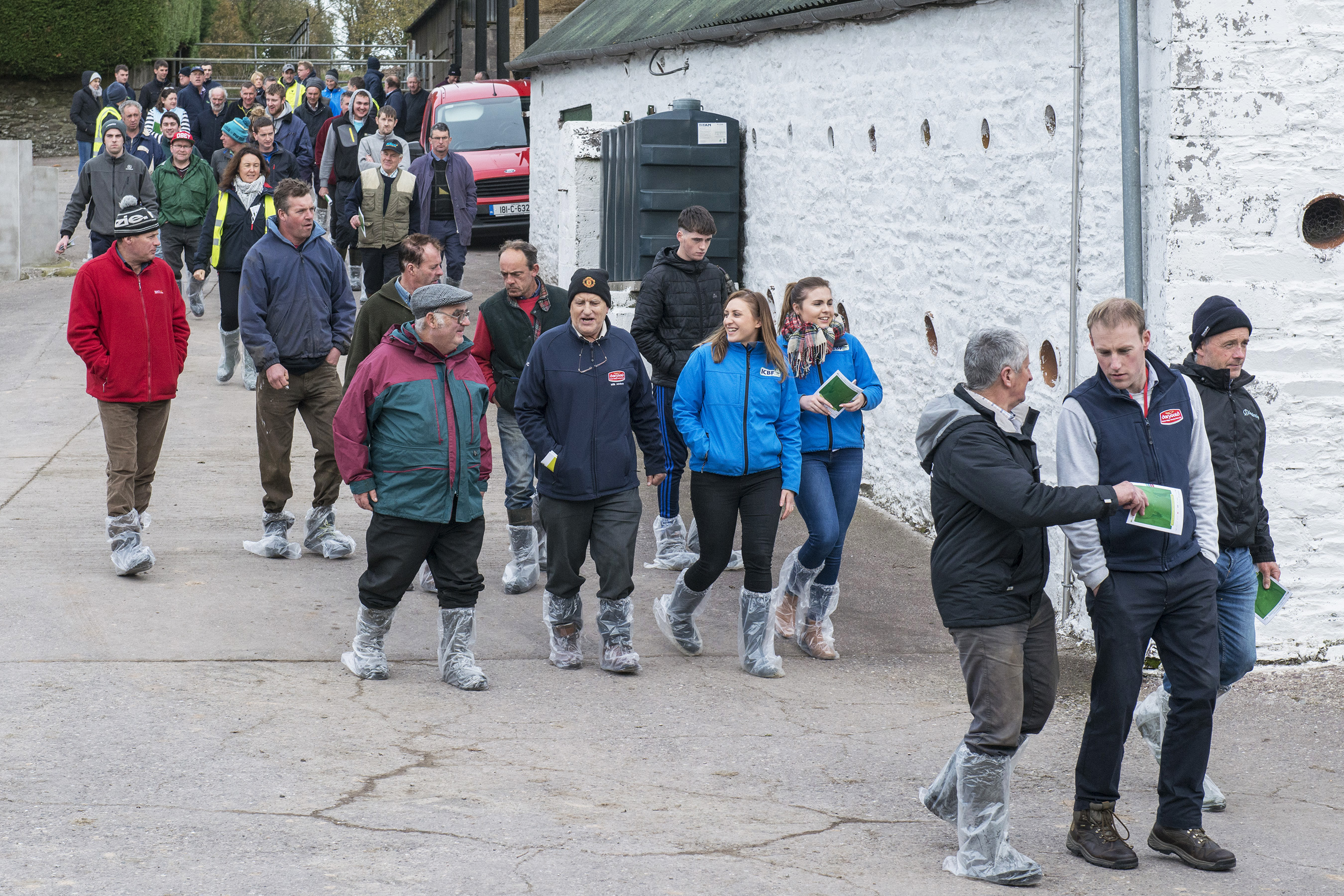The steps taken by farmers when drying off cows can have a significant impact on mastitis levels during the dry period and also during the following lactation.
Animal Health Ireland (AHI), in conjunction with Teagasc and various milk processors, held a number of CellCheck on-farm events, where best practice in drying off cows was outlined.
One important aspect of the dry period is dry-cow therapy; its purpose is to treat any intra-mammary infections and to protect against new infections during the dry period.
AHI says that it’s important that this procedure is carried out correctly. It is also essential that farmers prepare by allowing adequate time and labour when administrating dry-cow products to their herd and that staff are adequately trained.

Pictured are a section of the crowd at the Teagasc / Animal Health Ireland / Dairygold CellCheck event at Kevin Downing’s farm. Image source: O’Gorman Photography
Preparation
To ensure the procedure runs smoothly, it’s advisable to be prepared; have the items you need to hand before starting and clip the cows’ tails in advance of carrying out the procedure.
Where a teat sealer is being used in addition to an antibiotic, AHI says, follow the same protocol as above except the teat sealer is not massaged into the quarter.
Before squeezing the contents of the tube of sealer into the teat, use your free hand to close off the base of the teat where it joins the udder.
The teat sealer is then left in the teat to act as a physical barrier to bacterial infection of the cows’ teats. It also provides extra protection towards the end of the dry period and especially around calving time. Remember, the biggest risks of infection during the dry cow period are at the beginning and the end of the dry-cow period.
